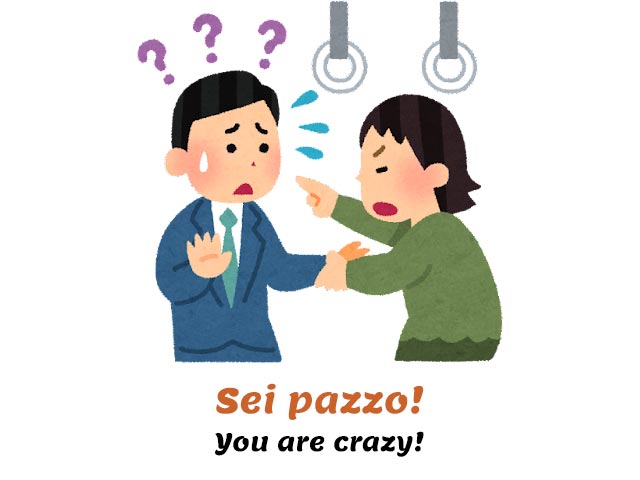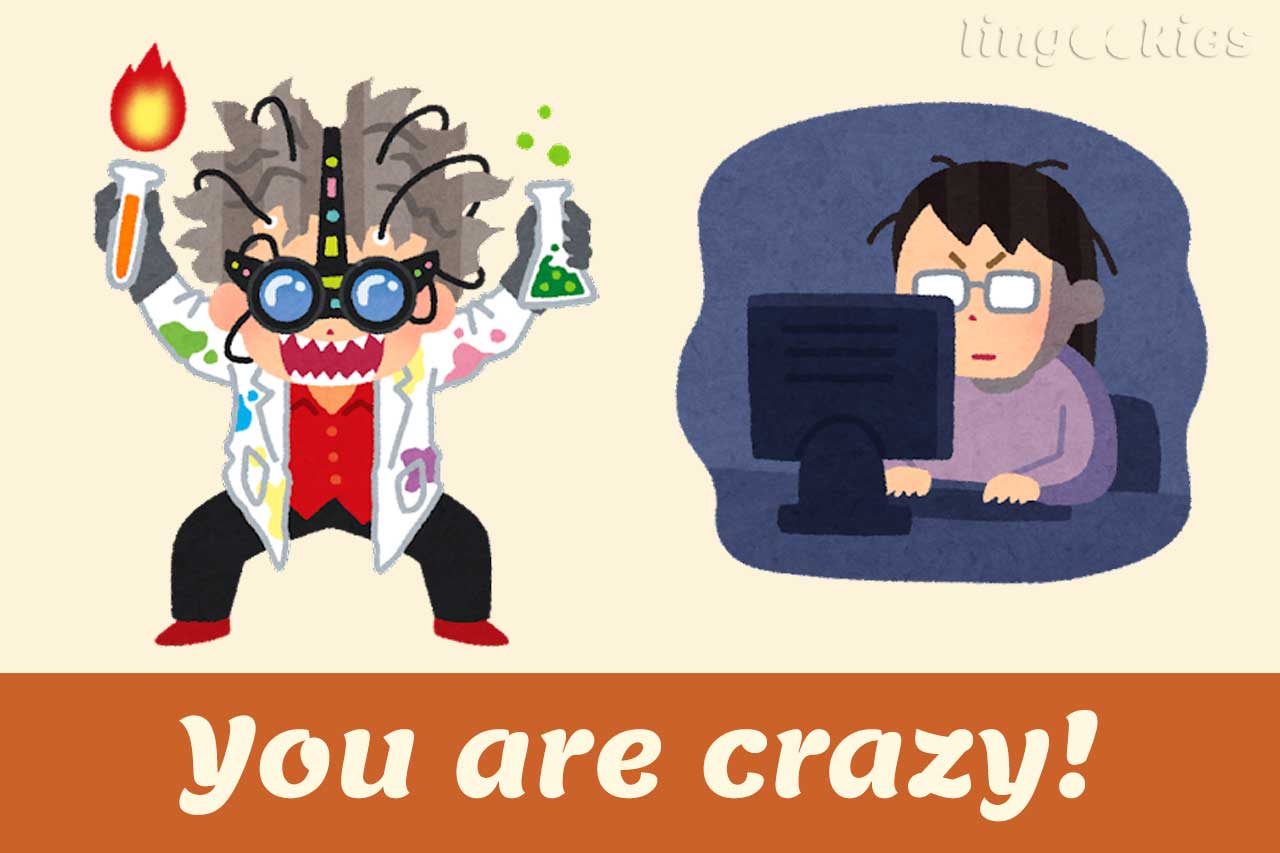How do you say it in Italian?
Sei pazzo! / Sei pazza!
| Words you should know | Essere (to be) + pazzo (mad) |
| When to use this | With 1 person you’re familiar with |
| When NOT to use this | With strangers (doh!) and groups |
Sei pazzo!
You are crazy!
(singular, informal, masculine)
Sei pazza!
You are crazy!
(singular, informal, feminine)

The reason why there are two forms of the adjective “crazy” is that, unlike English, Italian has two genders: masculine and feminine.
Every noun and adjective must match that gender. If you’re talking to a man, you’ll use pazzo because that’s the masculine adjective. If you’re talking to a woman, you’ll use pazza, because that’s the feminine form of the adjective.
For example, you can say…
Sei pazzo, Lorenzo, se credi di poter scalare quel monte!
You are crazy, Lorenzo, if you think you can climb that mountain!
Alice, non mettere i fogli di alluminio nel microonde! Sei pazza!
Alice, don’t put aluminum foil in the microwave! You are crazy!

If you want to emphasize your point, you can make the subject pronoun explicit by using tu, which means “you” in the singular.
Tu sei pazzo!
You are crazy! (m)
Tu sei pazza!
You are crazy! (f)
Siete pazzi! Siete pazze!
| When to use this | With a group of people |
| When NOT to use this | With strangers (doh!) and 1 person at a time |
Siete pazzi!
You are crazy!
(plural, masculine)
Siete pazze!
You are crazy!
(plural, feminine)
In Italian, unlike English, there are two kinds of “you”. There is a singular “you” and then there is a plural “you”. If you’re speaking to a group, you’ll need to conjugate any verb or pronoun accordingly, and don’t forget the gender!

There’s another caveat here.
You will use the masculine form of the adjective if there’s at least one male in the group you are talking to.
If there are only women or girls in the group, then use the feminine form of the adjective.
Nuotate in mare in pieno inverno? Siete pazzi!
You’re swimmin in the sea in the middle of winter? You are crazy!
Ragazze, voi siete pazze. Non penserete davvero di dormire nel bosco, vero?
Girls, you are crazy. You are not really thinking of sleeping in the woods, are you?
Of course, if you want to emphasize your statement, you can add the subject pronoun to the sentence.
Voi siete pazzi!
You are crazy! (m)
Voi siete pazze!
You are crazy! (f)
Lei è pazzo! Lei è pazza!
| When to use this | With 1 person you’re NOT familiar with |
| When NOT to use this | With friends, family and groups |
When speaking formally, Italians address each other with the subject “she”, lei. Use Lei in the written form if you want to be very polite.
Lei è pazzo!
You are crazy!
(singular, polite, masculine)
Lei è pazza!
You are crazy!
(singular, polite, feminine)
You can also omit the subject pronoun, although this sounds less common to my native ear.
È pazzo!
You are crazy! (m)
È pazza!
You are crazy! (f)

Sei matto!
| Words you should know | Matto (mad, crazy) |
| When to use this | With 1 person you’re familiar with |
| When NOT to use this | With strangers (doh!) and groups |
Sei matto/a, along with its plural and polite forms siete matti/e and è matto/a, is another way to translate you are crazy in Italian.
Matto is another translation for crazy in Italian, but it’s less common. However, it behaves just like pazzo because it must match the gender and number of the person(s) you are referring to.
Of course, forms that include the subject pronouns are also possible and common, like tu sei matto and voi siete matti.
Sei matto
You are crazy (singular, informal)
Siete matti
You are crazy (plural)
È matto
You are crazy (polite)
More free Italian resources
You might want to keep learning Italian online with these free Italian resources:
❤️ If you liked this lesson on how to say you are crazy in Italian, share it with your friends!


